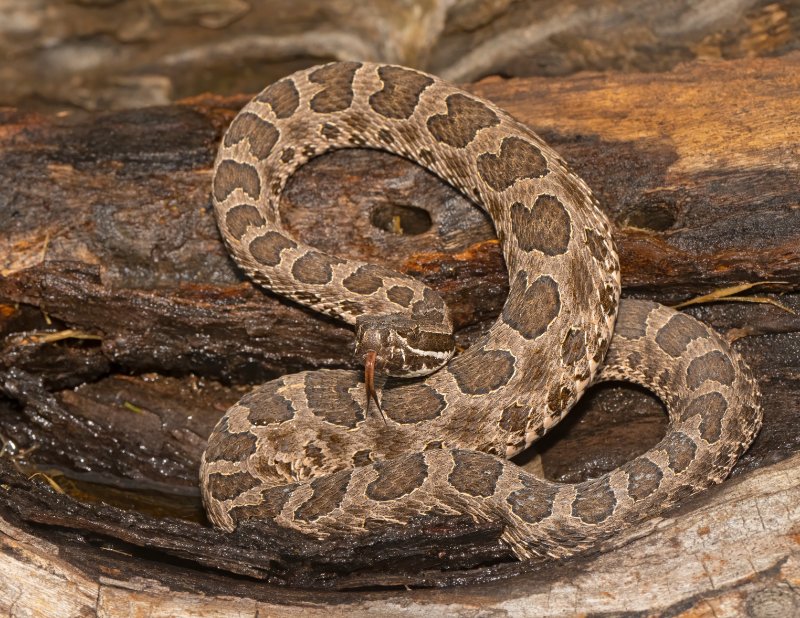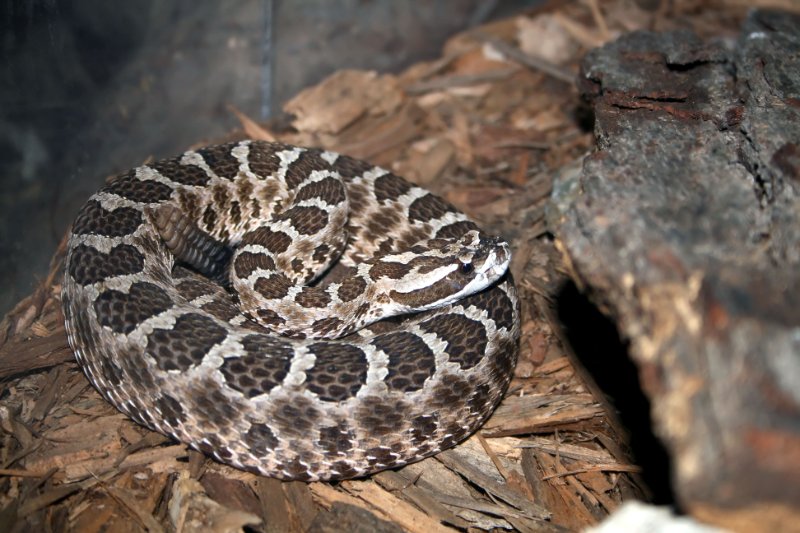“
Imagine a rattlesnake. The likelihood is that the image of a diamondback jumps into your mind, and not the lesser-known Massasauga Rattlesnake. This elusive creature, its name meaning “big river mouth” in Chippewa, echoes the damp terrains it calls home. Despite once being abundant, the Massasauga Rattlesnake is now facing the threat of extinction due largely to human actions.
Physical Attributes of the Massasauga Rattlesnake
A sturdy snake, the Massasauga Rattlesnake can grow to measure between 50 – 100 cm upon reaching adulthood. Interestingly, males tend to outgrow females. Typical coloring for these creatures involves a gray or brown body accented by specific dark blotches running down their back. Their tails boast unique dark stripes encased in tones echoing their main body color, while their undersides hold a broad spectrum of black mottling.
The Massasauga Rattlesnake’s Natural Habitat
The Massasauga Rattlesnake chooses to reside in locations combining temperature and moisture, such as:
- Fens
- Marshes
- Swamps
- Bottomland forests
This snake has been spotted across North America, from Canada’s southern climes to the Gulf Coast of Texas, and even eastwards to Pennsylvania.
Breeding habits of the Massasauga Rattlesnake
Spring and fall mark the primary mating seasons for Massasauga Rattlesnakes. After a gestation period of about 3.5 months, these creatures exhibit remarkable maternal instincts, providing extraordinary care for their unborn offspring. It’s noteworthy to mention that these birth processes are live, a trait not shared by all species of snake. Offspring typically stay with their mother for several days post-birth before setting off on their own. Interestingly, female snakes can only reproduce biennially.
Behavior and diet of the Massasauga Rattlesnake
Known to lead solitary lives, Massasauga Rattlesnakes hibernate exclusively in mammal burrows during the cold season. They migrate to warmer grounds when the weather breaks, always returning to the same hibernation spot each year. Habitually residing in damp environments, they are efficient swimmers, yet love idling in the sun on high ground.
Notorious carnivores, these rattlers have a preference for small rodents, such as:
- Mice
- Shrews
Occasional delicacies may include small birds, insects, frogs, or even other snakes. Their typical hunting strategy involves immobilizing their prey with venom before consuming them. However, weaker creatures such as baby mice or frogs may be consumed without the venomous strike.
Threats to the existence of Massasauga Rattlesnake
Despite being effective predators, Massasauga Rattlesnakes face threats. Among known menaces are hawks, larger snakes, and mammalian predators like foxes and raccoons. However, the greatest current threat facing these creatures today is humankind. Human encroachment into their natural habitats and killing contests in the ’70s have left the Massasauga Rattlesnake’s population significantly impaired.
Related Resources: Rattlesnake Facts
“

